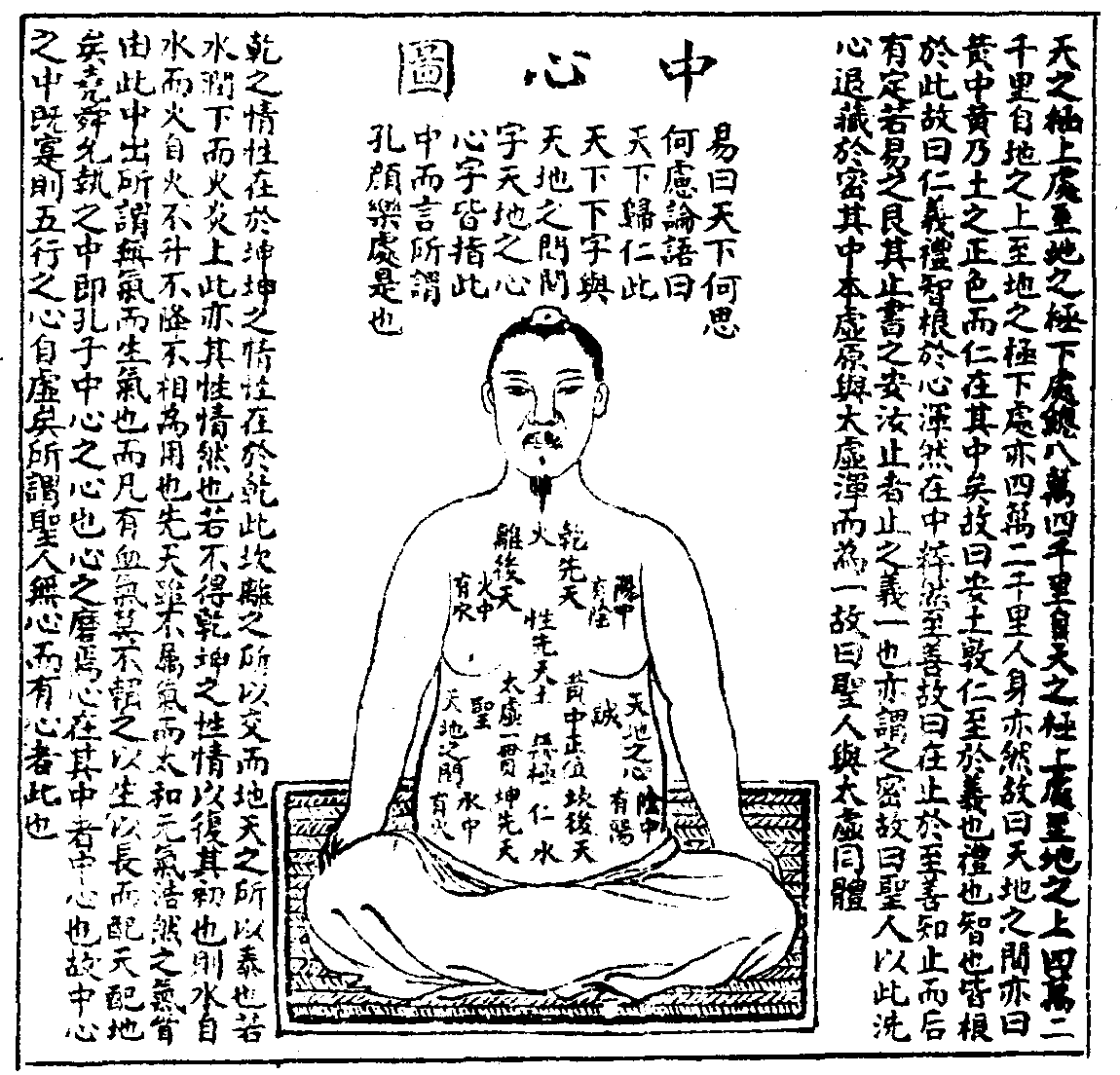Meditation vs Yoga Nidra & NSDR Protocol: A Guide through the Differences and Benefits
SUMMARY TL;DR
All of them optimize mental well-being. Yoga Nidra is a guided practice usually done lying-down, ideal for beginners looking for deep relaxation and stress relief. Meditation, typically seated and self-guided, enhances focus and spiritual growth through disciplined practice.
Historical and Philosophical Foundations
Yoga Nidra, often described as yogic sleep, has ancient roots in yogic traditions. Developed as a guided practice that systematically leads practitioners into a state of conscious relaxation, it offers a structured path toward deep rest.
On the other hand, Meditation encompasses a broad spectrum of techniques—from mindfulness and concentration exercises to open awareness practices—that encourage self-inquiry and sustained presence.
Both methods aim to quiet the mind, yet they differ in their approach to achieving tranquility and balance.

Centering the Mind, 1615. Image by 尹真人 - 《性命圭旨
Key Differences Between Yoga Nidra and Meditation
1. Posture and Physical Engagement
- Yoga Nidra: Practiced lying down, usually in Shavasana, to encourage complete physical relaxation. This posture allows the nervous system to shift into "rest and digest" mode, making it ideal for stress recovery.
- Meditation: Typically done seated in Lotus Position or on a chair with an upright spine to promote alertness and mental focus. This posture supports sustained concentration and inward awareness.
2. State of Consciousness
- Yoga Nidra: Guides practitioners into the hypnagogic state—a twilight zone between wakefulness and sleep. Brainwaves shift to alpha and theta frequencies, linked to deep relaxation and subconscious processing.
- Meditation: Maintains waking consciousness (beta and gamma brainwaves) to cultivate present-moment awareness. Advanced practices may reach samadhi, a state of unified consciousness.
3. Guidance and Structure
- Yoga Nidra: A structured, guided practice involving body scans, breath awareness, visualization and multiple other techniques. Ideal for beginners, it requires minimal effort as the instructor directs the session.
- Meditation: Often self-guided, focusing on a single anchor like breath, mantras, or silent observation. Mastery demands disciplined mental training.
4. Primary Goals
- Yoga Nidra: Designed for deep relaxation and nervous system reset. Studies show that just 20 minutes of practice have positive effects for productivity, sleep improvement and more.
- Meditation: Aims for spiritual growth and mental clarity. Regular practice enhances emotional regulation, focus, and self-awareness, with research linking it to increased gray matter in the prefrontal cortex.
5. Effort and Accessibility
- Yoga Nidra: Passive and accessible—no prior experience needed. Its guided nature helps beginners achieve profound relaxation quickly.
- Meditation: Active and challenging. Requires sustained mental effort to quiet the "monkey mind," often taking years to master.
Shared Benefits
Both Yoga Nidra and meditation offer transformative benefits for mental and physical well-being through distinct yet complementary mechanisms.
Stress reduction lies at the core of both practices. A meta-analysis in Psychoneuroendocrinology (Pascoe et al. 2017) found mindfulness meditation significantly reduces cortisol levels and increases heart rate variability (HRV), a key parasympathetic nervous system marker.
Improved sleep quality emerges naturally from these practices, as they quiet the persistent mental chatter that often disrupts rest cycles. A randomized trial in JAMA Internal Medicine (Black et al., 2015) showed mindfulness meditation improved sleep efficiency in older adults by 6.4%, equivalent to ~45 extra minutes of restful sleep nightly.
Perhaps most critically for modern life, both methods sharpen cognitive focus through neuroplastic adaptations—strengthening attention spans and decision-making clarity. In a study in Psychological Science (Mrazek et al., 2013), 2 weeks of mindfulness training improved GRE reading scores by 16% and working memory capacity by 12%, attributed to reduced mind-wandering.

Cells from a medial prefrontal cortex, responbile for our memory. Image by Cody Siciliano
How to Choose (or Combine) Both Practices
When to Choose Yoga Nidra:
- Seeking rapid stress relief (like a mid-day recovery)
- Struggling with insomnia or anxiety
- You're emotionally exhausted
- New to mindfulness practices
When to Choose Meditation:
- Cultivating focus for creative/work tasks
- Building long-term emotional resilience
- Exploring spiritual growth or self-realization
Synergistic Integration:
Many practitioners combine both:
- Morning: Meditation to set intentional focus.
- Evening: Yoga Nidra to unwind and transition into rest.
- Custom Hybrids: Use Yoga Nidra's body scan to prepare for seated meditation, enhancing mental clarity.
The Rise of New Era Adaptations
Non Sleep Deep Rest (NSDR) Protocol
Developed by Stanford neuroscientist Dr. Andrew Huberman, the NSDR Protocol represents a modern, neuroscience-driven adaptation of ancient relaxation practices like Yoga Nidra.
It is rooted in the same principles but focused more towards a secular audience:
No intentions, no cryptic language.
― @hubermanlab on a tweet explaining the difference between Yoga Nidra and NSDR Protcol
This protocol bridges traditional and contemporary wellness practices. For Yoga Nidra, NSDR offers a secular, streamlined framework—retaining core techniques like body scans while omitting Sanskrit terminology or spiritual elements.
ZenPersonal: Personalized & Unique
ZenPersonal is a guided deep rest generator. Being a generator, means each sessions is generated on the spot for the specific user.
After setting a few simple parameters like the main purpose, the voice, the language and background sounds you get a session generated specifically for your need at the moment.
This makes it possible for everyone to meditate exactly how they prefer, be it more spiritual or more secular.
Complementary Paths to Wellness
Yoga Nidra, meditation, NSDR and ZenPersonal are not rivals but allies in the journey toward holistic well-being.
Whether you need the restorative power of yogic sleep, the mindful discipline of meditation, the precision of NSDR or the personalization of ZenPersonal these practices offer tools to navigate modern life's demands. By understanding their differences, you can tailor your routine to meet shifting needs—whether recovering from burnout, enhancing productivity, or deepening self-awareness.
Experiment, observe, and let your practice evolve. As neuroscience and ancient traditions converge, these techniques remain timeless solutions for a balanced life.